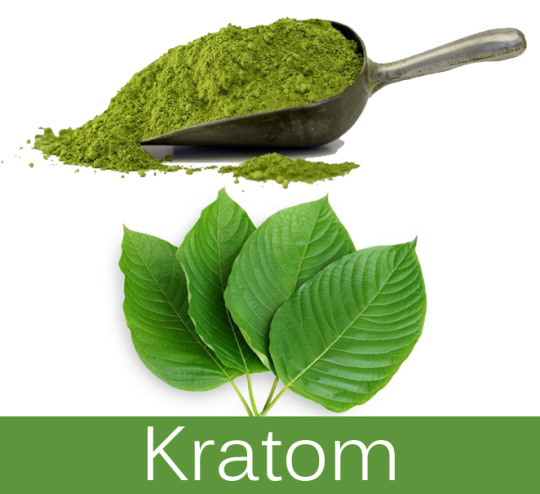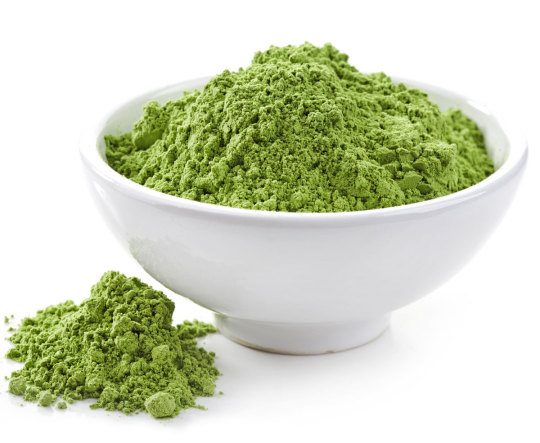Text
Unlocking the Mysteries of Kratom: A Comprehensive Guide
Kratom, a plant native to Southeast Asia, has recently gained popularity in Western culture for its perceived medicinal and recreational effects. Its leaves contain compounds that interact with opioid receptors in the brain, leading to effects that can range from stimulating to sedating. Despite its long history of traditional use in regions like Thailand and Malaysia, kratom's legal status and potential risks have sparked considerable debate and scrutiny. As interest in alternative remedies continues to grow, understanding the intricacies of kratom is crucial for making informed decisions about its consumption. Join us on a journey to unravel the mysteries surrounding this enigmatic botanical.
The Background of Kratom
Kratom, a tropical tree native to Southeast Asia, is renowned for its diverse traditional uses. This botanical herb has been integrated into cultural practices for generations, valued for its therapeutic properties. Its leaves contain compounds that interact with the body’s receptors, producing various effects. Kratom's origins can be traced back to ancient civilizations who recognized its potential benefits.
In recent years, the Western world has shown a growing interest in kratom, leading to increased research and awareness. This botanical substance has sparked debates due to its potential therapeutic applications and controversial status in various countries. Understanding the historical background of kratom is essential for comprehending its significance in different societal contexts.
Despite its long history, kratom remains a topic of ongoing research and scrutiny. buy kratom canada of kratom continues to evolve in response to shifting perspectives and regulations. By delving into its background, we can gain valuable insights into the complexities surrounding this intriguing botanical and its relevance in today's world.

Health Benefits of Kratom
Kratom is believed to have an analgesic effect, providing natural pain relief for individuals suffering from chronic conditions. Many users report feeling relief from discomfort and improved overall well-being after consuming kratom products.
In addition to pain relief, kratom has been touted for its potential as a mood enhancer. Some users claim that kratom helps alleviate symptoms of anxiety and depression, promoting a sense of relaxation and tranquility after consumption.
Furthermore, kratom is thought to boost energy levels and increase focus and concentration. This stimulant-like effect can be beneficial for individuals dealing with fatigue or needing a natural pick-me-up to enhance productivity throughout the day.
Potential Risks of Kratom
Kratom consumption can lead to various health issues, especially when used in high doses for extended periods. Some individuals may experience adverse effects such as nausea, vomiting, and dizziness. It is essential to monitor the dosage to avoid these unpleasant outcomes.
Furthermore, there have been reports linking kratom use to respiratory problems and potential addiction. Over-reliance on kratom as a coping mechanism for pain or stress can develop into a dependency, leading to withdrawal symptoms when usage is reduced or halted abruptly.
In some cases, kratom products have been found to be contaminated with other substances, posing a risk of unknown side effects or allergic reactions. It is crucial to source kratom from reputable vendors and ensure product purity for a safer consumption experience.
0 notes
Text
Exploring the Truth Behind Kratom: Myths vs. Reality
Kratom, a tropical tree native to Southeast Asia, has been a topic of controversy and curiosity in recent years. As its popularity grows, so does the spread of myths and misconceptions surrounding this natural substance. Advocates praise kratom for its potential health benefits, while critics raise concerns about its safety and legality. In this article, we will delve into the complexities of kratom, separating fact from fiction to uncover the truth behind this polarizing plant. Whether you are a seasoned kratom user or someone hearing about it for the first time, join us on this journey of exploration to gain a deeper understanding of what kratom truly is and its impact on individuals and society.
The History of Kratom
Kratom has a long history, with records dating back centuries to Southeast Asia. Indigenous communities in countries like Thailand, Malaysia, and Indonesia have been using kratom for its various benefits for generations.
In traditional practices, kratom leaves were often chewed for their stimulating effects, or brewed into a tea for their calming properties. It was also used to alleviate pain and boost energy levels during long working hours in the fields.
Despite its long history of use in traditional settings, kratom has faced controversy and scrutiny in recent years due to its potential for misuse and addictive properties. This has led to varying legal statuses in different parts of the world, with some countries banning its use altogether.
Common Myths about Kratom
Myth #1: Kratom is a dangerous opioid.
Reality: While kratom does interact with opioid receptors in the brain, it is not classified as an opioid. It has a different chemical structure and does not cause respiratory depression like traditional opioids.
Myth #2: Kratom is highly addictive.

Reality: While some individuals may develop a dependence on kratom with regular use, studies show that it has a lower potential for addiction compared to opioids and other substances. Addiction risks vary depending on individual factors.
Myth #3: Kratom is illegal and dangerous to use.
buy kratom canada online : Kratom is legal in many countries around the world, although some regions have imposed restrictions. When used responsibly and in moderation, kratom can offer potential benefits for certain individuals without posing significant risks.
Scientific Evidence and Reality
Research conducted on kratom has shown varying results, providing both support and skepticism regarding its potential benefits and risks. Some studies suggest that kratom can be effective in managing chronic pain due to its interaction with opioid receptors in the brain. This has led to speculation that kratom could be a safer alternative to traditional opioid medications in certain cases.
On the other hand, concerns have been raised about the potential for kratom misuse and addiction. Studies have indicated that regular kratom use may lead to tolerance and withdrawal symptoms, similar to those associated with opioids. This has prompted calls for further research and regulation to ensure the safe use of kratom and minimize the risk of abuse.
Overall, while scientific evidence on kratom is still evolving, it is essential to approach its use with caution and awareness of the potential benefits and risks. As more research is conducted, a clearer understanding of kratom and its effects will emerge, helping to separate the myths from reality surrounding this controversial botanical substance.
0 notes
Text
Unveiling the Mysteries of Kratom: A Comprehensive Guide
Kratom, known scientifically as Mitragyna speciosa, has been gaining popularity in recent years for its potential therapeutic benefits. Native to Southeast Asia, this tropical evergreen tree belongs to the coffee family and has a long history of traditional use by the indigenous people of the region. The leaves of the Kratom tree are harvested and processed to produce powders, capsules, and extracts that are consumed for various reasons, including pain relief, mood enhancement, and increased focus.
One of the reasons why Kratom has garnered attention is its alkaloid content, particularly mitragynine and 7-hydroxymitragynine, which are believed to interact with the body’s opioid receptors. The effects of Kratom can vary depending on the strain and dosage consumed, with some users reporting stimulating effects at lower doses and sedative effects at higher doses. However, the use of Kratom has also stirred controversy and regulatory scrutiny due to safety concerns and the potential for abuse. Despite this, many proponents advocate for its potential as a natural alternative to conventional medications for managing chronic pain and other conditions.
History of Kratom
Kratom, a botanical substance derived from the leaves of the Mitragyna speciosa tree, has a rich history rooted in Southeast Asia. Indigenous communities in regions such as Thailand, Malaysia, and Indonesia have utilized kratom for centuries for its various medicinal and recreational properties.
Historically, kratom was commonly consumed by laborers and farmers to combat fatigue and increase energy levels during long working hours in the fields. Its stimulant-like effects were prized by individuals seeking a natural way to boost productivity and endurance, making it a staple in traditional herbal medicine practices.
Over time, kratom's popularity spread beyond its countries of origin, reaching Western markets where it gained a reputation as a natural alternative for managing pain, anxiety, and other health conditions. The cultural and historical significance of kratom continues to shape its use and perception in modern society.
Benefits and Effects
Kratom is renowned for its potential therapeutic benefits, including pain relief, increased energy levels, and enhanced mood. Many users report experiencing a sense of euphoria and calmness after consuming kratom, making it a popular choice for those seeking a natural way to manage stress and anxiety.
Furthermore, kratom is known to possess stimulating properties, similar to caffeine, which can help improve focus and concentration. This makes it a favored option for individuals looking to boost their productivity levels or stay alert during long work hours. Additionally, buy premium lab tested kratom canada online is believed to enhance cognitive function, leading to improved mental clarity and cognitive performance.

Moreover, kratom has been traditionally used as a folk medicine for centuries, particularly in Southeast Asia. Its potential analgesic effects have made it a sought-after remedy for managing chronic pain conditions. Some users also report that kratom aids in alleviating symptoms of opioid withdrawal, providing a natural alternative for individuals battling addiction issues.
Safety Precautions
It is essential to approach kratom consumption with caution and responsibility. Start with a low dosage and gradually increase as needed to minimize the risk of adverse effects. Stay informed about the potential side effects and interactions with other substances.
It is not advisable to mix kratom with alcohol or other drugs as this can lead to unpredictable reactions. Remember that everyone's body reacts differently to substances, so what may work for one person may not work for another. Always prioritize your well-being and health above all else.
Lastly, never operate heavy machinery or drive under the influence of kratom. Allow yourself ample time to understand how kratom affects your body before engaging in any activities that require full focus and attention. Your safety and the safety of others should always be the top priority.
1 note
·
View note